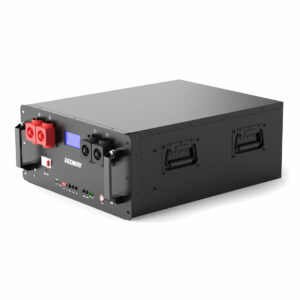Is it better to have more batteries or solar panels?
Balancing solar panels and batteries depends on energy needs and usage patterns. Solar panels generate power during daylight, while batteries store excess energy for nighttime or low-sunlight conditions. High-efficiency panels (e.g., 22.8% cell efficiency) maximize daytime production, reducing reliance on batteries. However, insufficient storage capacity limits energy availability after sunset. Optimal systems prioritize panel capacity to meet daily demand, then add batteries to cover nighttime needs. For example, a 5kW solar array paired with 10kWh storage typically covers 80% of a household’s 24-hour load in sunny regions. 48V Rack Battery
How do solar panel efficiency and battery capacity interact?
Panel efficiency dictates energy generation per square meter, while battery capacity determines storage duration. High-efficiency panels (20–23%) produce more kWh daily, reducing the number needed. For instance, 450W panels with 22.8% cell efficiency generate 30% more power than standard 18% models, potentially cutting panel count by 25%. Pro Tip: Always match battery kWh to 1.5× your nightly consumption—undersizing causes frequent deep discharges that degrade lithium-ion cells.

Consider a home using 15kWh nightly: A 22.5kWh battery bank (e.g., three 48V 100Ah LiFePO4 packs) provides 1.5 days’ backup. Transitional phrases like “Beyond daytime production…” and “Practically speaking…” help contextualize the balance. But what if panels generate surplus energy? Excess power can charge batteries faster, but oversized panels without adequate storage waste potential. A 10kW array charging a 10kWh battery reaches 80% SOC in 1 hour under ideal sun—faster than smaller systems.
| Scenario | Panels (kW) | Batteries (kWh) |
|---|---|---|
| Sunny climate | 6 | 10 |
| Cloudy region | 8 | 15 |
When should you prioritize adding more solar panels?
Expand panels first when daytime usage exceeds generation or battery recharge cycles fail. If your 5kW system produces 25kWh daily but you consume 30kWh, adding 2kW of panels boosts output to 35kWh, eliminating deficits. Pro Tip: Use micro-inverters or DC optimizers when expanding panels—they mitigate shading losses and allow mixed orientations.
Imagine a farm using 50kWh daily for irrigation: Doubling panels from 10kW to 20kW cuts grid dependence from 40% to 10% in summer. Transitional phrases like “Considering seasonal variations…” and “From a cost perspective…” enhance flow. Why not just add batteries? Because 20kWh extra storage (≈$6,000) costs more than 5kW of panels (≈$4,000) while solving only 8 hours of load.
RackBattery Expert Insight
FAQs
Can I mix old and new solar panels?
Only if voltages and currents match—mismatched strings cause 15–30% efficiency losses. Use parallel connections with individual MPPT controllers.
How long do solar batteries last?
Quality LiFePO4 batteries last 10–15 years (6,000 cycles at 80% DoD), outperforming lead-acid’s 3–5 year lifespan.
